Key Takeaways
1. Great brands start inside: Culture is the foundation
"Without strong cultural alignment, it's very easy for hardworking and talented people to work at cross-purposes and produce mediocre results because they all have different opinions about what's on brand and what's not."
Culture drives brand success. Great brands recognize that a strong internal culture is essential for delivering a consistent and authentic brand experience. They invest in creating a shared understanding of the brand's values, purpose, and identity among all employees and stakeholders. This alignment ensures that everyone in the organization is working towards the same goals and making decisions that reinforce the brand.
Culture-building strategies:
- Develop a clear brand platform that articulates core values and purpose
- Use tools like Brand Toolboxes to provide guidance on brand expression
- Conduct Brand Engagement Sessions to increase understanding and buy-in
- Extend brand culture to external partners and stakeholders
By starting with a strong internal culture, great brands create a solid foundation for all other brand-building efforts. This inside-out approach leads to more authentic and consistent brand experiences for customers.
2. Avoid selling products: Focus on emotional connections
"We humans are emotional creatures. We make our purchase decisions based on how products promise to make us feel."
Emotional connections drive loyalty. Great brands understand that customers are not simply buying products or services; they are buying into experiences, identities, and emotional states. By focusing on creating deep emotional connections rather than just promoting product features, these brands build lasting relationships with customers.
Strategies for emotional brand-building:
- Identify the core emotional benefits your brand provides
- Use storytelling and experiential marketing to bring these emotions to life
- Develop products and services that deliver on emotional promises
- Conduct empathic research to understand customers' deeper needs and desires
Examples:
- Nike's "Just Do It" campaign taps into emotions of empowerment and achievement
- Starbucks creates a "third place" that evokes feelings of comfort and community
By prioritizing emotional connections over product attributes, great brands create more meaningful and enduring relationships with their customers.
3. Ignore trends: Challenge conventions and anticipate movements
"Real growth happens when you catch a rising wave and no one else is nearby to share it with. Then you're riding a wave you can call your own."
Lead, don't follow. Great brands resist the temptation to chase short-term trends, instead focusing on anticipating and shaping long-term cultural movements. This approach allows them to differentiate themselves and create new markets rather than competing in crowded spaces.
Strategies for anticipating movements:
- Conduct ongoing cultural scanning and forecasting
- Identify "value denials" – unmet needs in the marketplace
- Challenge industry conventions and status quo thinking
- Invest in innovation that aligns with emerging cultural shifts
Examples:
- Chipotle challenged fast food conventions with its focus on fresh, ethically-sourced ingredients
- Tesla anticipated the shift towards sustainable transportation and reshaped the automotive industry
By ignoring trends and focusing on deeper cultural movements, great brands position themselves as leaders and innovators in their industries.
4. Don't chase customers: Attract ideal customers with brand identity
"If it doesn't provide a clearly appealing message to a discrete target, a brand will lack distinctiveness. It will have no draw."
Attract, don't pursue. Great brands have a clear sense of their identity and the specific customers they serve best. Rather than trying to appeal to everyone, they focus on attracting customers who align with their values and offerings. This approach leads to more loyal customers and a stronger brand position.
Strategies for attracting ideal customers:
- Develop a clear brand positioning that differentiates you from competitors
- Use needs-based segmentation to identify your most valuable customer groups
- Craft messaging and experiences that resonate with your target audience
- Be willing to say "no" to opportunities that don't align with your brand
Examples:
- Lululemon maintains high prices and strict return policies, attracting committed fitness enthusiasts
- Red Bull's polarizing brand personality intentionally appeals to a specific, adventure-seeking demographic
By focusing on attracting ideal customers rather than chasing any available market, great brands build stronger, more authentic relationships with their core audience.
5. Sweat the small stuff: Details create memorable experiences
"All the little things you do—or fail to do—for your customers in person will out-communicate the big things you may claim through mass media."
Details matter. Great brands recognize that every interaction with customers, no matter how small, shapes their perception of the brand. They obsess over the details of the customer experience, ensuring that every touchpoint reinforces the brand's values and promises.
Strategies for sweating the small stuff:
- Create a Brand Touchpoint Wheel to identify all customer interactions
- Develop a Customer Experience Architecture to design optimal experiences
- Align all touchpoints to deliver a consistent brand experience
- Empower employees to make decisions that enhance customer experiences
Examples:
- Apple's meticulous product packaging creates a sense of anticipation and quality
- Zappos' commitment to customer service extends to offering free return shipping and 365-day returns
By paying attention to even the smallest details, great brands create more memorable and impactful customer experiences that reinforce their brand identity.
6. Commit and stay committed: Sacrifice for long-term brand integrity
"A great company is much more likely to die of indigestion from too much opportunity than starvation from too little."
Stay true to your core. Great brands have a clear understanding of their core identity and values, and they remain committed to these even when faced with tempting opportunities or short-term pressures. This unwavering focus helps build trust with customers and creates a stronger, more resilient brand over time.
Strategies for maintaining commitment:
- Develop a clear brand essence that articulates your core purpose and values
- Use your brand platform as a filter for decision-making
- Be willing to sacrifice short-term gains for long-term brand integrity
- Regularly reaffirm your commitment to core brand principles
Examples:
- Southwest Airlines has consistently refused to charge for checked bags, despite industry trends
- Patagonia encourages customers to buy less and repair their existing products, prioritizing environmental values over short-term sales
By committing to their core identity and values, great brands build stronger, more authentic relationships with customers and create lasting brand equity.
7. Never have to "give back": Create shared value for all stakeholders
"Great brands make their social and cultural contributions by creating shared value for all stakeholders, including their communities."
Integrate social impact. Rather than treating social responsibility as a separate initiative, great brands integrate it into their core business model. They create value not just for shareholders, but for all stakeholders, including employees, communities, and the environment.
Strategies for creating shared value:
- Identify areas where your business can address social or environmental issues
- Develop products or services that solve societal problems
- Redesign your supply chain to be more sustainable and ethical
- Engage employees in meaningful social impact initiatives
Examples:
- IKEA designs products and operations to make quality furniture accessible to more people
- Patagonia's Common Threads Initiative encourages repair and recycling of its products
By creating shared value for all stakeholders, great brands build stronger relationships with their communities and create more sustainable, resilient businesses.
8. Brand as business: Integrate all principles for maximum impact
"What separates a truly great brand from a merely good one is whether the organization carries out a complete and thorough implementation of the seven brand-building principles within a cohesive brand-as-business approach."
Holistic implementation is key. The true power of these brand-building principles comes from implementing them as an integrated whole. Great brands don't cherry-pick individual strategies; they embrace a comprehensive "brand as business" approach that infuses every aspect of their operations.
Strategies for brand as business:
- Align all business strategies and decisions with your brand platform
- Develop core competencies in brand strategy implementation
- Integrate brand-building efforts across all departments and functions
- Use your brand as a lens for evaluating new opportunities and challenges
Benefits of the brand-as-business approach:
- Exposes new growth opportunities
- Shapes business objectives and strategies
- Creates unified, focused teams
- Connects daily activities to long-term brand vision
By fully embracing the brand-as-business approach, companies can unlock the full potential of their brand to drive growth, innovation, and long-term success.
Last updated:
FAQ
What's What Great Brands Do about?
- Brand as Business: The book emphasizes using the brand as a management tool to guide operations, culture, and customer experiences.
- Seven Principles: Denise Lee Yohn outlines seven principles that distinguish successful brands, focusing on internal culture, emotional connections, and strategic positioning.
- Case Studies: Examples from companies like IBM, Starbucks, and IKEA illustrate how they operationalize their brand values to achieve success.
Why should I read What Great Brands Do?
- Practical Insights: Offers actionable strategies and exercises for business leaders and marketers to implement effective brand management practices.
- Avoid Common Pitfalls: Helps readers understand the risks of trend-following and the importance of aligning internal culture with brand values.
- Long-Term Success: Guides readers toward sustainable growth and customer loyalty by focusing on emotional connections and brand integrity.
What are the key takeaways of What Great Brands Do?
- Brand Integration: Brands should be integrated into every aspect of a business, not just marketing, to drive success.
- Emotional Connections: Prioritizing emotional engagement with customers fosters long-term relationships.
- Trend Resistance: Successful brands challenge trends and anticipate cultural movements, creating unique market positions.
What are the seven principles outlined in What Great Brands Do?
- Start Inside: Cultivate a strong internal brand culture to deliver on brand promises and engage employees.
- Avoid Selling Products: Focus on emotional connections rather than just product features to build lasting customer relationships.
- Ignore Trends: Anticipate and advance cultural movements that align with brand values instead of chasing trends.
- Commitment: Long-term commitment to brand values is necessary for maintaining focus and integrity.
What are the best quotes from What Great Brands Do and what do they mean?
- “Great brands start inside.”: Emphasizes the importance of internal culture and values in shaping a brand's identity.
- “Great brands avoid selling products.”: Highlights the focus on emotional connections and experiences rather than just transactions.
- “Great brands commit and stay committed.”: Stresses the necessity of long-term dedication to brand values and strategies.
How does What Great Brands Do define emotional brand building?
- Emotional Connections: Customers make purchase decisions based on how brands make them feel, not just product efficacy.
- Long-Term Relationships: Emotional connections lead to customer retention and loyalty, increasing lifetime value.
- Examples of Success: Companies like Nike and Pampers show how emotional branding drives innovation and market growth.
What is the significance of internal culture in What Great Brands Do?
- Foundation for Success: A strong internal culture aligns employees with brand values, ensuring consistent delivery of the brand promise.
- Employee Engagement: Engaged employees connect with customers and deliver exceptional experiences that reinforce brand loyalty.
- Cultural Change: Necessary for redefining a brand and achieving long-term success, as seen in the case of IBM.
How does What Great Brands Do suggest brands should handle trends?
- Challenge Trends: Brands should challenge the status quo and create movements that resonate with their values.
- Anticipate Movements: Proactively identify and advance cultural shifts, positioning as leaders rather than followers.
- Avoid Short-Term Focus: Warns against trend-following, which can dilute brand identity and lead to unsustainable practices.
What does What Great Brands Do say about customer relationships?
- Selective Targeting: Focus on attracting customers who align with brand values, rather than trying to appeal to everyone.
- Building Loyalty: Strong relationships are built on shared values and emotional connections, leading to higher loyalty.
- Quality Over Quantity: Emphasizes cultivating relationships with ideal customers over chasing every potential buyer.
What is the role of a Brand Diagnostic in What Great Brands Do?
- Assessment Tool: Evaluates a brand’s strengths, weaknesses, and opportunities for growth.
- Cross-Functional Approach: Involves collaboration across departments for a comprehensive understanding of the brand’s market position.
- Strategic Planning: Informs strategic decisions, aligning operations with core values and customer needs.
What is the Competitive Brand Positioning method discussed in What Great Brands Do?
- Framework for Differentiation: Helps brands define their unique value in the marketplace by identifying target customers and understanding competitors.
- Emotional and Rational Aspects: Ensures the brand resonates on multiple levels with consumers, creating a compelling narrative.
- Guiding Decisions: Establishes a clear positioning statement to guide marketing strategies and operational decisions.
How can brands effectively ignore trends, as suggested in What Great Brands Do?
- Focus on Core Values: Prioritize core values and mission over fleeting trends to maintain a consistent brand identity.
- Emphasize Authenticity: Staying true to brand essence differentiates from competitors chasing trends, building trust and loyalty.
- Long-Term Vision: Adopt a long-term vision guiding decisions, fostering sustainable growth and brand strength.
Review Summary
What Great Brands Do receives mostly positive reviews, with readers praising its insightful content on brand-building principles. Many find it practical and thought-provoking, highlighting its focus on aligning brand values with corporate culture and customer experiences. Some readers appreciate the real-world examples and case studies, while others find them dated. Critics argue the book rehashes familiar marketing concepts. Overall, readers value the book's emphasis on brand-centric strategies and its applicability to various business scenarios.
Similar Books


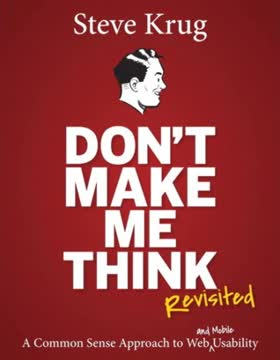

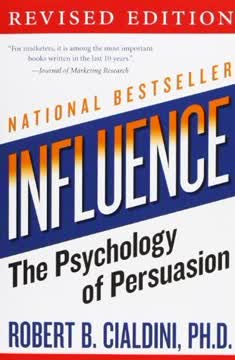


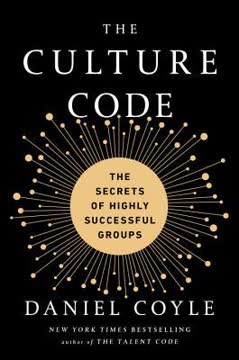
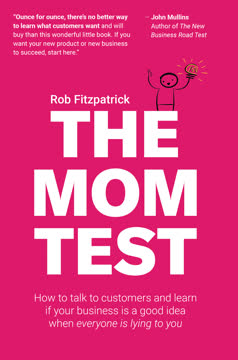
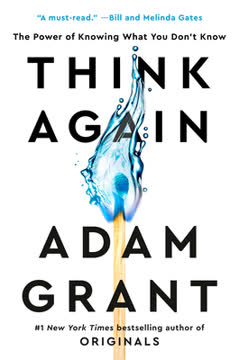
Download PDF
Download EPUB
.epub digital book format is ideal for reading ebooks on phones, tablets, and e-readers.




